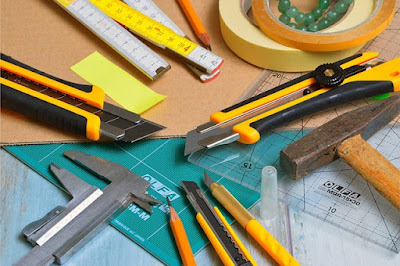Pro Woodworking Joints - Incredible Joints You’ll Master in No Time
Joinery is the heart of woodworking. It’s what separates casual DIY builds from masterfully crafted furniture that stands the test of time. While beginners often stick to simple butt joints, learning box joints and dovetail joints can dramatically improve both the strength and visual appeal of your woodworking projects.
Whether you're building drawers, jewelry boxes, or custom furniture, these time-tested techniques will elevate your craftsmanship—and your confidence.
What Are Box Joints?
Box joints (also known as finger joints) are square interlocking “fingers” cut into two pieces of wood that fit together at a right angle. These joints are ideal for small projects like boxes, drawers, and cabinets.
If you're a beginner, this is a great step after mastering basic cuts. You can start using precision-cut joints by following the step-by-step guide to building a smart CNC saw with free DIY Smart Saw plans, which automates clean, repeatable cuts.
Benefits of Box Joints
-
Strength: Multiple fingers increase glue surface for maximum durability.
-
Decorative look: The joint's pattern adds character to any build.
-
Beginner-friendly: Easy to cut with jigs and basic shop tools.
How to Cut Box Joints
-
Use a box joint jig to ensure accuracy.
-
Choose between a table saw with a dado blade or a router table.
-
Measure your finger spacing with precision.
-
Test your setup on scrap wood before final assembly.
Need tools but working on a budget? Check out our budget-friendly woodworking tools and setup guide for essential gear under $1,000.
What Are Dovetail Joints?
Dovetail joints are instantly recognizable by their interlocking trapezoidal shapes. Known for their strength and beauty, they’re a hallmark of quality craftsmanship, often used in drawers and fine furniture.
Looking for ways to use dovetail joints in your home? Explore inspirational woodworking plans for home decor projects that showcase exposed joints beautifully.
Benefits of Dovetail Joints
-
Superior strength: The angled design locks the joint in place.
-
Craftsmanship appeal: Exposed dovetails showcase skill and tradition.
-
No nails or screws: Once glued, the joint is self-locking.
How to Cut Dovetail Joints
-
Plan your layout using a dovetail marker or template.
-
Use a backsaw and chisel or a dovetail jig with a router.
-
Practice patience—precision matters more than speed.
For a complete learning system, explore our Ultimate Guide to Woodworking Plans with skill-building projects that incorporate dovetail joinery techniques.
Pro Tips for Better Joinery
1. Practice on Scrap Material
Don’t waste quality wood while learning. Testing on scrap ensures clean results when it counts.
2. Use Accurate Tools
Sharp tools and square jigs make all the difference. If you’re setting up a shop, our recommended tools list for small workshop setups has you covered.
3. Keep Blades and Chisels Sharp
Clean edges and smoother cuts prevent tear-out, especially in hardwood.
4. Plan Before You Cut
A solid plan prevents mistakes. Follow our CNC Smart Saw tutorial for precision woodworking to save time and get cleaner joints.
Frequently Asked Questions (FAQs)
Q1: Which joint is stronger—box joints or dovetails?
A: Dovetails are generally stronger because of their angled locking mechanism. Box joints are still strong, especially for lighter builds.
Q2: Are dovetail joints too advanced for beginners?
A: Not with the right resources. Start with these beginner-friendly woodworking tutorials for precision joints.
Q3: How do I size box joint fingers properly?
A: Match the width of each finger to the thickness of your stock—for example, use ½" fingers for ½" wood.
Q4: Can I cut dovetails with a machine?
A: Yes! Use a dovetail jig and router for clean, repeatable joints, especially for production work like drawers.
Q5: Where can I find project plans that include joinery techniques?
A: Download 16,000 woodworking plans with detailed joinery diagrams for a complete resource library.
Final Thoughts
Learning to cut box and dovetail joints opens the door to professional-grade woodworking. With the right plans, tools, and practice, you’ll build projects that are not only strong—but stunning.
Start your journey today by following our CNC Smart Saw plans for precision joinery at home and take the guesswork out of perfect cuts.
📚 Explore More Woodworking Resources:







.jpeg)

.jpeg)
